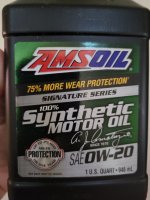Actually all the rest of the world save Germany goes by exactly the same thing that the US does. In fact the US was one of the last to change their marketing practices.The definition of synthetic engine oil has changed from "what is the actual content of the oil" to "how well does the oil perform." In other words, if an oil performs as well as a true synthetic oil made in a laboratory, it can be called full synthetic. I have mixed feelings about this... I think the rest of the world is (again) laughing at Americans because the rest of the world still goes by the definition of synthetic oil based on actual content of the oil, which is (in my opinion) technically more accurate. Although I do enjoy getting the performance of real synthetic oil but paying much less for fake synthetic.
Last edited:



